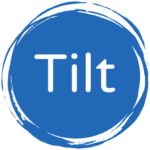How to balance long term planning and agile sprints
If you are experiencing this tension you are not alone. Focusing on both your long term goals and short iterations delivering work is an ongoing balance. It’s especially tricky when you are working in an agile way while those around you are not.
We regularly hear from teams who say:
- “How do I decide what my team’s sprint goals are?”
- “How do I work in an agile way when my organisation asks for detailed long term plans?”
- “My team work in agile sprints but have to work with other teams who need lots of notice to collaborate”
Here are seven things that can help you:
1. Shift from outputs to outcomes
2. Create a roadmap
3. Adapt your roadmap
4. Add detail as you go
5. Adapt your sprint length
6. Make active decisions
7. Use agile principles
1.Shift from outputs to outcomes
- Shift your focus from outputs (what you’re going to build) to outcomes (the desired behaviour change you want to see in your users). An outcome could be adopting a new feature, being more active with your product, upgrading an account or getting more people to sign up.
- Use these outcomes to set strategic objectives (not tactics!), then break those down into the shorter term work.
- If your stakeholders are tracking numbers like revenue, users, market share, ask them why those are important to uncover the outcomes they want.
2. Create a roadmap
- Build a basic roadmap using outcome milestones instead of project dates and deadlines. i.e. rather than we will produce x document by x date, consider committing to “we will have run this many tests by this date which will inform the next step”. This can help you bridge the gap with teams working in less agile ways.
- Keep your roadmap high-level (you could just use the buckets ‘now, next, later’) – then move things around as you learn more.
- Bring your roadmap up a level. It should not be a list of features or a backlog. The roadmap should be tied to strategic themes. So rather than listing out specific features or tasks that need to be accomplished, roll those up into larger themes and communicate the roadmap at the theme level.
3. Keep adapting your roadmap
- Share, check and continuously improve your roadmap.
- Involve your stakeholders in those changes so they understand that your roadmap is a living, changing thing.
- You also may not yet know the effort level behind the ideas you’re considering. As you get closer to delivering them, it will become more clear how much effort will be needed. Then you can make decisions about which items will best accomplish your goals.
4. Add detail as you go
- Visualise your roadmap the same way you would your work. For example you could use ‘now, next, later’ columns in Trello. This way you can show your short-term commitments with clarity while things in the ‘later’ column can be fuzzy as you don’t know the detail yet.
- We have found that in small or medium sized organisations, this Kanban style is a great way to avoid getting locked into an inflexible,12-plan.
- Use your what you are learning from your user research and testing to continuously reprioritise
5. Adapt your sprint length
- If the team struggle to complete the work they plan for a sprint, try a shorter and more focused sprint.
- If your team fails to make meaningful progress each sprint, make the sprint duration longer
- Remember, consistency and predictability are important so don’t change sprint length too often. Once the sprint length is set, stick with it for a while to see if it’s working.
- More on how to choose the best agile sprint length for your team here.
6. Make active decisions
- Work with other teams to really understand how they work and their deadlines, so you have clarity on what a ‘real’ deadline is.
- Consider what you could exchange for flexibility.
- Set strict boundaries for what you and your team can do.
- Reprioritise all the time based on what you learn about your users needs, your organisations requirements, your team etc.
7. Come back to agile principles
- Remember why you’re using agile and always come back to the principles. Don’t let processes, tools and steps get in the way of being more adaptable and value-focused!
- When you begin, you are likely to have to create hybrid ways of doing things that span both agile and traditional ways of working. Over tie we encourage you to advocate for change within your wider team and organisation.







